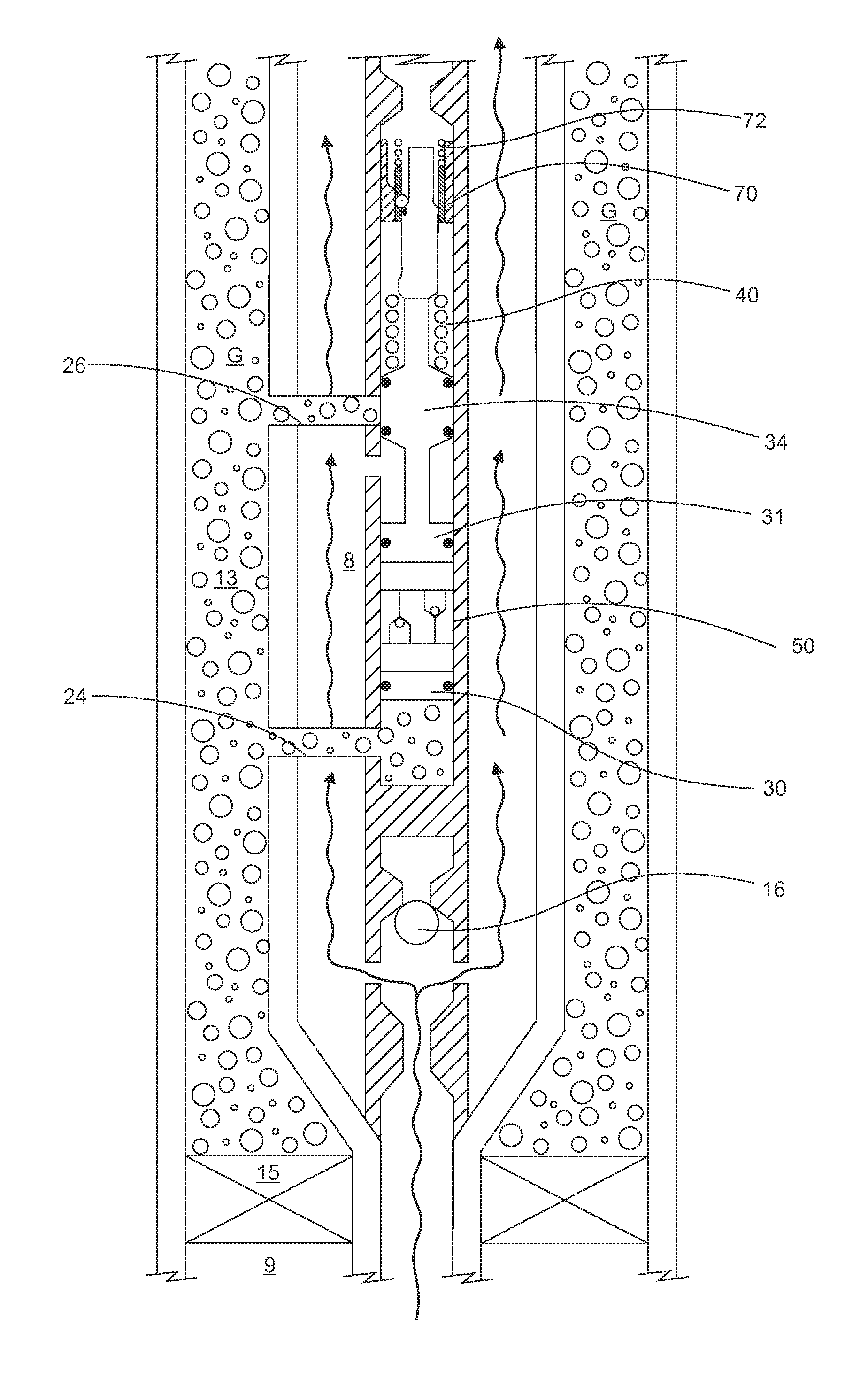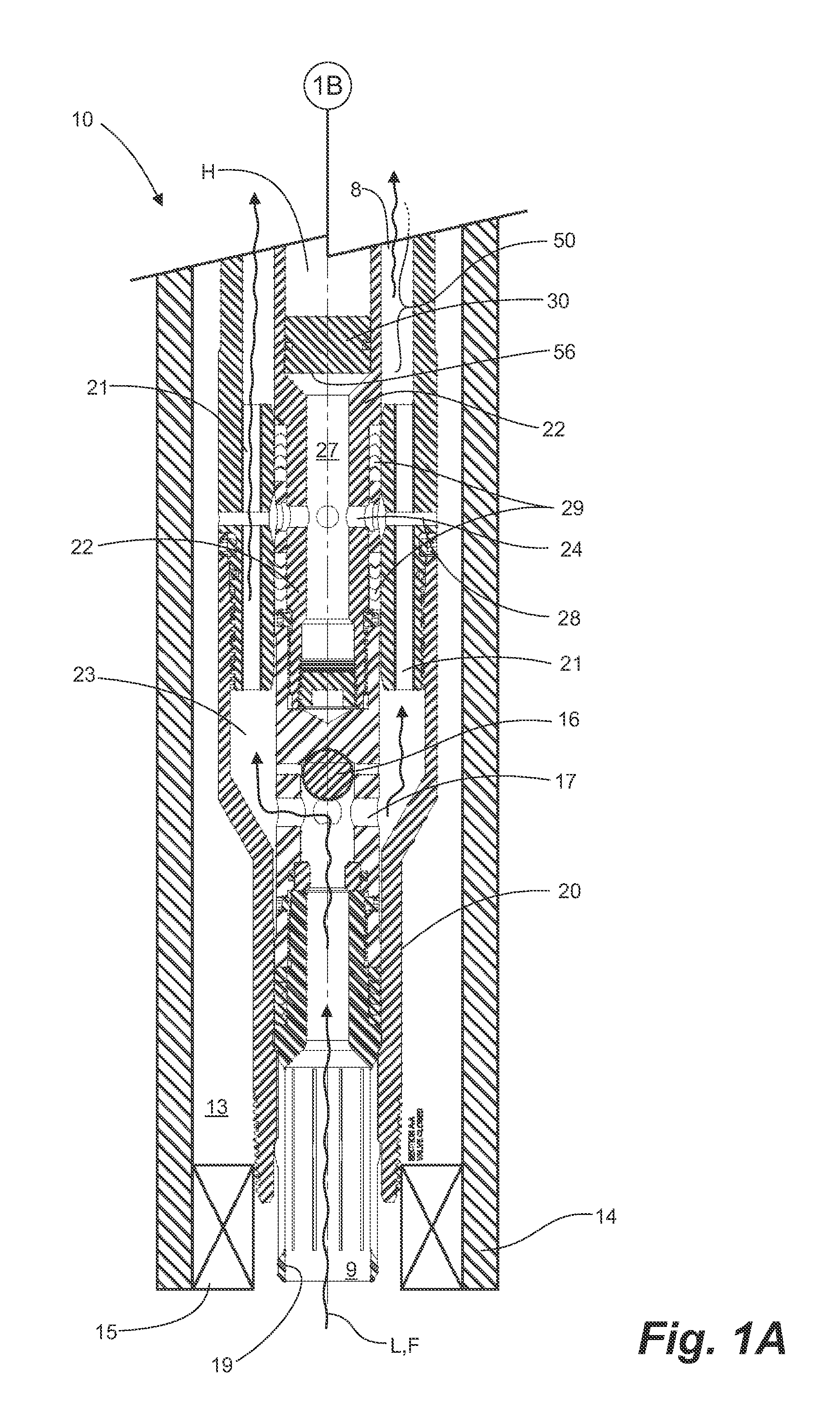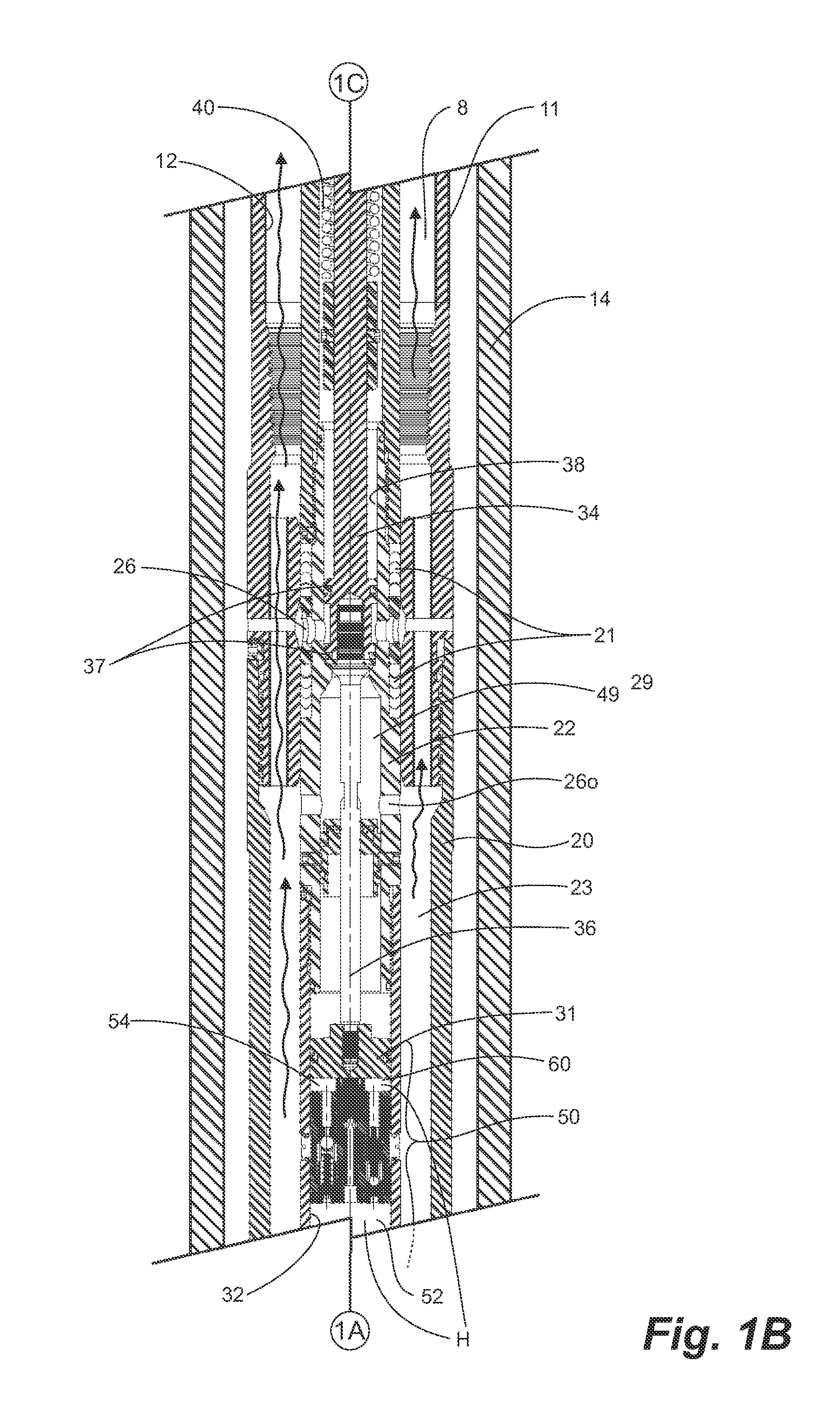Pressure range delimited valve with close assist
a technology of pressure range and valve body, applied in the field of valves, can solve the problems of destroying the well, affecting the gas recovery process, and presenting great challenges to the industry, and achieve the effect of enhancing the gas recovery
- Summary
- Abstract
- Description
- Claims
- Application Information
AI Technical Summary
Benefits of technology
Problems solved by technology
Method used
Image
Examples
Embodiment Construction
[0030]As described herein, valve 10, is actuated by a high pressure to open and biased under lower pressures to close. Valve closing or kicker means are provided for assisting the valve to close fully.
[0031]With reference to FIGS. 1A-1C and 1D-1F, it is convenient to illustrate the operation of one embodiment of the valve 10 for the control of production fluids F and removal of accumulated liquids L from a wellbore 9. The wellbore 9 is cased with a casing string 14 and a tubing string 11 extends down the cased wellbore 9, having a downhole end located for receipt of the production fluids F. The valve 10 is located in a bore 12 of the downhole end of the tubing string 11.
[0032]A wellbore annulus 13 is formed between the tubing string 11 and the casing string 14. In this embodiment a packer 15, shown in a fanciful schematic form only and with non-pertinent downhole components of the valve or downhole assembly omitted, seals the wellbore annulus 13 so that production fluids F from the ...
PUM
 Login to View More
Login to View More Abstract
Description
Claims
Application Information
 Login to View More
Login to View More - R&D
- Intellectual Property
- Life Sciences
- Materials
- Tech Scout
- Unparalleled Data Quality
- Higher Quality Content
- 60% Fewer Hallucinations
Browse by: Latest US Patents, China's latest patents, Technical Efficacy Thesaurus, Application Domain, Technology Topic, Popular Technical Reports.
© 2025 PatSnap. All rights reserved.Legal|Privacy policy|Modern Slavery Act Transparency Statement|Sitemap|About US| Contact US: help@patsnap.com



